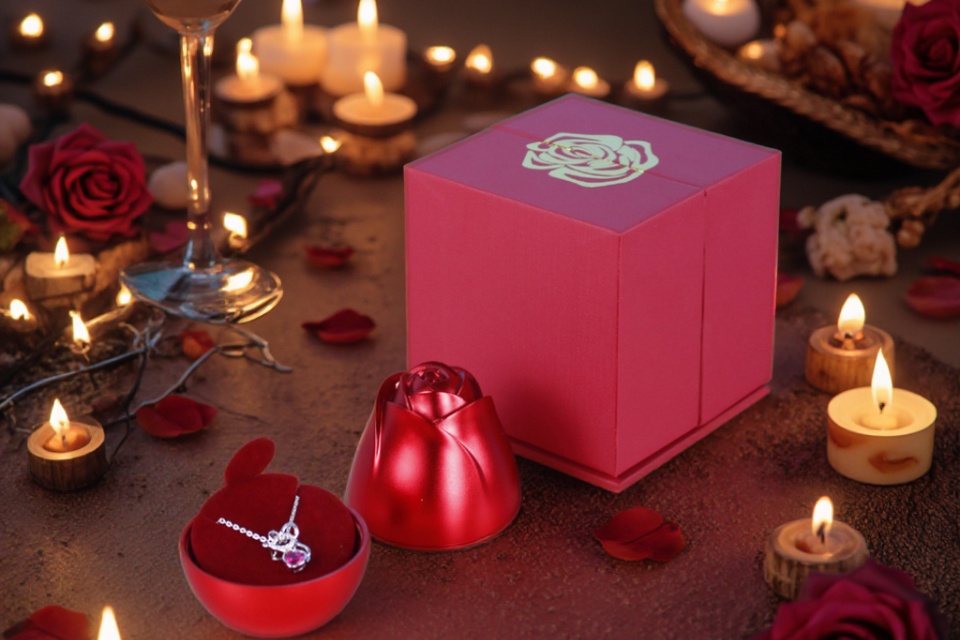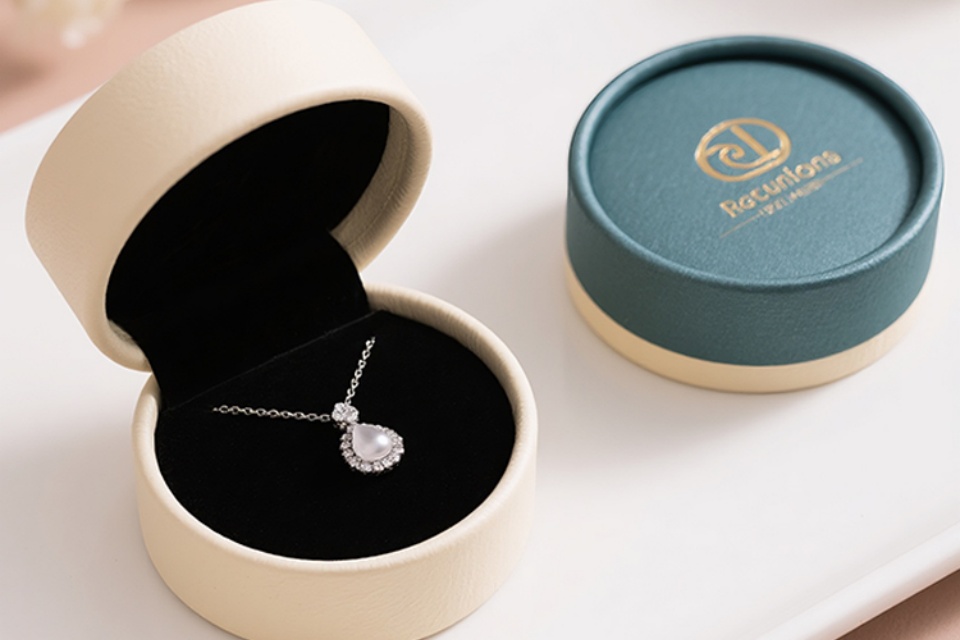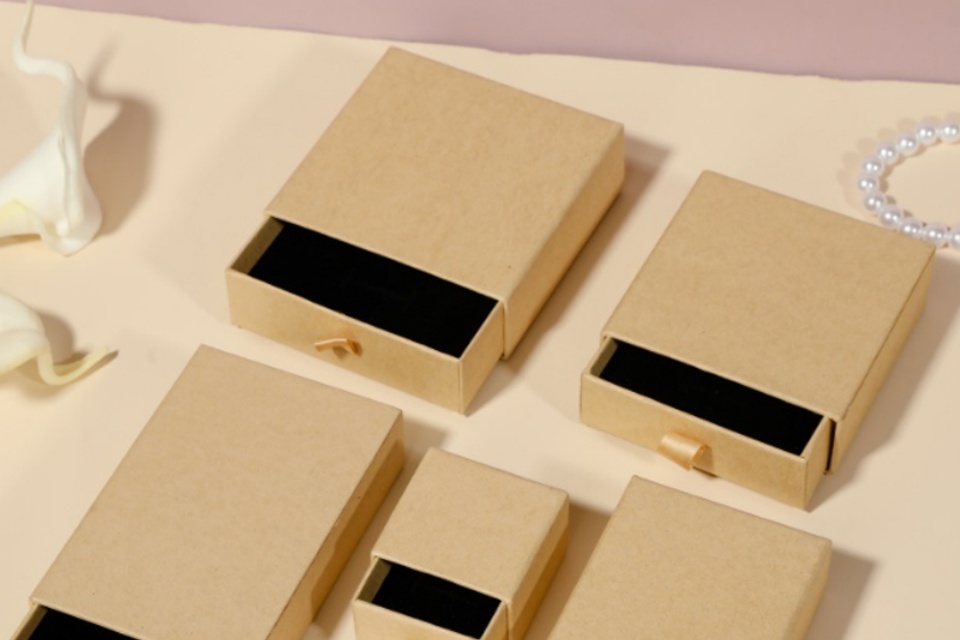Our News
How Packaging Impacts Perceived Value Of Jewelry
How Packaging Impacts Perceived Value Of Jewelry
Summary
The perceived value of jewelry is significantly influenced by its packaging, which serves as a critical element in the luxury goods market. Packaging not only protects the jewelry but also communicates the brand's identity and story, contributing to an enhanced customer experience. Historical trends demonstrate that ornate and high-quality packaging has long been associated with luxury jewelry, with brands such as Van Cleef & Arpels integrating artistry into their designs since the early 20th century. This evolution reflects a broader recognition among luxury retailers that well-designed packaging can elevate perceived value by as much as 25%.
Contemporary consumers place substantial importance on packaging aesthetics, with studies indicating that up to 72% of American shoppers are influenced by packaging design in their purchase decisions. Elements such as material choice, visual appeal, and functionality all play pivotal roles in shaping consumer perceptions. For instance, high-quality materials and innovative designs can evoke emotional responses that enhance brand loyalty and create lasting impressions, while practical features like user-friendly openings further solidify customer satisfaction.
The rise of sustainable practices has also impacted the jewelry packaging landscape, as consumers increasingly favor eco-friendly materials. Approximately 60% of shoppers indicate a preference for brands that utilize recyclable or biodegradable options, reflecting a growing trend towards environmental consciousness in purchasing decisions. In this competitive market, effective packaging strategies not only differentiate brands but also strengthen consumer trust and connection, making it an essential consideration for retailers aiming to maximize sales and foster long-term loyalty.
Overall, the interplay between packaging and perceived value in the jewelry sector underscores its significance as a marketing tool that can enhance consumer experiences, elevate brand identities, and drive sales. As brands continue to innovate in design and functionality, the strategic use of packaging remains a vital component in shaping consumer perceptions and driving success in the luxury jewelry market.
Historical Context
The significance of packaging in the jewelry industry has evolved dramatically over the years, serving not just as a protective vessel, but as a crucial element in conveying luxury and value. Historically, luxury jewelry packaging was often characterized by ornate designs and high-quality materials, which reflected the exclusivity of the items contained within. This trend can be traced back to brands like Van Cleef & Arpels, founded in 1906, which has consistently integrated artistry into its packaging, blurring the lines between jewelry and fine art.
As consumer expectations grew, the role of packaging expanded to include storytelling and brand identity. Luxury brands began to recognize that the packaging itself could enhance the perceived value of the jewelry. Studies have shown that well-designed, customized packaging can elevate the perceived worth of an item by up to 25%. This shift in perspective highlights the importance of packaging as a marketing tool rather than merely a functional component.
In the realm of luxury branding, heritage has become a pivotal aspect in the positioning of products. Brands that have a rich history often leverage their heritage to create an authentic luxury experience, tapping into unique craftsmanship and storytelling rooted in tradition. This notion is particularly evident in the approach taken by American brands like Ralph Lauren, which, while not steeped in centuries of history, embodies a lifestyle that consumers associate with luxury and exclusivity.
Additionally, as market dynamics shifted, the introduction of custom jewelry packaging became a response to increasing competition in the jewelry sector. Retailers recognized that personalized packaging could significantly enhance the consumer experience, making ordinary jewelry feel exceptional. The integration of digital technology and innovative designs into packaging has further transformed this landscape, enabling brands to create immersive experiences that engage consumers beyond the point of purchase.
Ultimately, the historical context of jewelry packaging reflects a continuous interplay between craftsmanship, consumer expectations, and market trends, underscoring its vital role in the luxury segment.
The Role of Packaging in Consumer Perception
Packaging plays a critical role in shaping consumer perception and influencing purchase decisions, particularly in the jewelry market. The design, materials, and overall presentation of packaging can significantly affect how customers perceive the value of a product and the brand behind it.
Emotional Impact of Packaging
Jewelry packaging has the potential to evoke strong emotional responses, which can influence purchasing behavior. Research indicates that 72% of Americans are swayed by packaging design when making a purchase decision. High-quality materials and elegant designs contribute to the perceived value of jewelry, enhancing the overall unboxing experience and fostering brand loyalty. The choice of packaging material, such as luxury boxes or sustainable options, sends a clear message about the brand's identity and values, which resonates with consumers.
Visual Elements and Brand Identity
The visual appeal of packaging is another crucial factor that shapes consumer perception. Elements such as color, typography, and imagery play a pivotal role in attracting attention and conveying the brand's identity. For instance, warm colors can evoke feelings of happiness and excitement, while elegant typography may communicate sophistication and quality. Jewelry brands that leverage these design elements can create a compelling narrative that captivates consumers and differentiates their products in a competitive market.
Functionality and Practicality
Beyond aesthetics, functional design is essential for enhancing the customer experience. Packaging should not only be visually appealing but also user-friendly, facilitating ease of opening and storage. Features like resealable options can add practicality, making the product more desirable and reinforcing the brand's commitment to customer satisfaction. This practical consideration further strengthens the emotional connection between consumers and the brand, influencing their perceptions of value and quality.
The Psychology Behind Luxury Packaging
In the luxury jewelry market, packaging serves a dual purpose: it protects the product and elevates its perceived status. High-end brands often employ bespoke designs and premium materials to elicit feelings of exclusivity and anticipation among consumers. This strategic approach taps into fundamental human desires for status and emotional satisfaction, reinforcing the perception that luxury packaging is synonymous with superior quality. By carefully crafting the unboxing experience, brands can create lasting impressions that translate into customer loyalty and repeat purchases.
Packaging Strategies for Jewelry
Customization and Branding
Custom jewelry packaging has become an essential element for brands seeking to differentiate themselves in a competitive market. By offering personalized packaging that features a branded logo, jewelry retailers can enhance brand recognition and convey their values and narrative effectively. Research indicates that 70% of small-to-medium-sized brands believe that custom packaging positively influences brand recognition. Independent designers particularly benefit from customized packaging, as it allows them to showcase their artistic vision and the uniqueness of their handmade products. Options such as silk-screen-printed pouches and engraved boxes create a sense of exclusivity, elevating the overall perceived value of the jewelry.
Sustainable Packaging Solutions
The growing trend towards sustainability has led to an increased demand for eco-friendly packaging options in the jewelry industry. Consumers are becoming more environmentally conscious, with 60% indicating they are more likely to purchase from brands that use recyclable or biodegradable materials. Sustainable materials such as recycled paper, cardboard, bamboo, hemp, and jute have gained popularity, allowing brands to minimize waste while still maintaining an elegant aesthetic. Implementing sustainable packaging not only helps in reducing the environmental impact but also appeals to a customer base that values eco-friendliness.
Enhancing the Unboxing Experience
The unboxing experience is crucial as it represents a customer's first tactile interaction with a brand after purchase. Effective packaging strategies can significantly enhance this experience by layering protective shipping materials with aesthetically pleasing inner boxes, pouches, and tissue wraps. Including digital elements like QR codes that link to styling tips or exclusive content adds an interactive dimension to the unboxing process, encouraging repeat customer engagement. High-quality materials such as glass, rigid cardboard, and decorative pouches can also create a lasting first impression, reinforcing the luxury associated with the jewelry.
Market Trends in Jewelry Packaging
Current market trends indicate a shift towards minimalist and modern packaging designs characterized by clean lines and simple color palettes. Such designs not only reflect sophistication but also resonate with both small-to-medium brands and independent designers. Moreover, high-end packaging, including custom jewelry boxes and branded tissue paper, enhances the perceived value of products, with studies showing that appropriate packaging can boost product value by up to 25%. This highlights the importance of investing in well-designed packaging as a means to position jewelry brands within the luxury market.
Functional Aspects of Packaging Design
In addition to aesthetics, the functional aspect of packaging design is critical. Jewelry boxes, for instance, must protect the items while also conveying a sense of quality and value through their materials and design. Ring boxes, which hold particular emotional significance, necessitate aesthetically pleasing designs that complement the beauty of the jewelry they contain. Manufacturers are increasingly offering customization options for such boxes, allowing consumers to infuse personal sentiment into their purchases. Consistent branding across packaging elements, including logos and color schemes, further enhances consumer trust and recognition, making it essential for brands to maintain cohesion throughout their packaging strategies.
Case Studies
Impact of Packaging on Customer Experience
In the jewellery industry, numerous case studies highlight the significant role of quality packaging in enhancing customer experience and elevating brand prestige. Leading brands have effectively demonstrated that thoughtful and consistent packaging not only boosts customer satisfaction but also fortifies branding efforts. By investing in superior packaging solutions, these brands create an environment where products are perceived as more valuable, ultimately providing actionable insights for other jewellery businesses looking to enhance their packaging strategies and secure a competitive edge.
Emotional Branding Through Packaging
Research indicates that emotional branding can be effectively leveraged through packaging design. The case studies reviewed have illustrated various strategies fashion brands use to engage customers emotionally, demonstrating that a well-crafted packaging experience can foster a deeper connection with the consumer. This emotional connection is particularly vital in the jewellery sector, where personal sentiment often influences purchasing decisions.
Market Trends in Custom Packaging
The growing demand for custom jewellery packaging reflects a need for brands to differentiate themselves in a highly competitive market. Case studies reveal that retailers, regardless of their size, face challenges in making their offerings memorable. Ordinary packaging can diminish the perceived value of high-end jewellery, while customized, thoughtfully designed packaging can transform a standard item into a luxury gift, potentially increasing its value by up to 25%.
Notable Examples: Tiffany & Co.
Tiffany & Co. serves as a prime example of how packaging can become synonymous with luxury. The brand's iconic blue box, which symbolizes elegance and sophistication, is crafted from high-quality materials and features distinct touches such as embossed logos and satin ribbons. This strategic approach to packaging not only enhances the unboxing experience but also reinforces the brand's identity and values. The meticulous design of their jewellery boxes reflects minimalist aesthetics and practical considerations, creating an exceptional visual appeal that has become a hallmark of luxury packaging design globally.
Impact on Sales and Brand Loyalty
Packaging plays a critical role in influencing consumer perceptions and purchasing decisions in the jewelry market. The first interaction a consumer has with a product often occurs through its packaging, which can set the tone for their overall experience and impression of the brand. Research indicates that 72% of American consumers are swayed by packaging design when making purchases, and approximately 67% consider the materials used in packaging as a significant factor in their decision-making process. This highlights the need for jewelry brands to invest in packaging that not only attracts attention but also communicates quality and value.
Emotional Connection and Consumer Experience
Packaging design is not merely about aesthetics; it taps into psychological triggers that can evoke emotional responses from consumers. Effective packaging can foster feelings of excitement, nostalgia, or luxury, leading to a deeper connection between the consumer and the brand. For instance, brands like Tiffany & Co. have mastered this approach, as their iconic blue box is not just a container but a symbol of exclusivity and desirability. This emotional engagement reinforces brand loyalty, making consumers more likely to choose and recommend products from brands that provide a memorable packaging experience.
Sustainable Practices and Consumer Preferences
As consumer awareness regarding environmental issues rises, sustainable packaging has become increasingly important. Many buyers now prefer jewelry items that come in eco-friendly packaging, reflecting a broader shift towards sustainability in consumer behavior. Brands that prioritize environmentally responsible packaging can appeal to eco-conscious consumers, enhancing their brand loyalty and driving sales. This trend indicates that consumers are not only looking for aesthetic appeal but also for brands that align with their values, including environmental stewardship.
Differentiation in a Competitive Market
In a crowded jewelry market, packaging serves as a crucial differentiator that can set a brand apart from its competitors. Luxury consumers are often willing to pay a premium for products that offer an exceptional unboxing experience, underscoring the importance of high-quality packaging in driving sales. By investing in unique, well-designed packaging, brands can enhance their perceived value and encourage repeat purchases, ultimately fostering long-term brand loyalty.
The Unboxing Experience
The unboxing experience plays a vital role in the jewelry industry, serving as a significant touchpoint in the customer journey. When customers receive their jewelry in beautifully designed packaging, the act of opening it can evoke feelings of excitement, appreciation, and inspiration. This moment can create a lasting positive impression, encouraging repeat purchases and word-of-mouth recommendations. The anticipation and thrill of unboxing transform a simple transaction into a memorable event, reinforcing the emotional connection between the customer and the brand.
Importance of Design and Functionality
A well-crafted unboxing experience is not only about aesthetics but also about functionality. Thoughtful design choices, such as custom die-cut windows or sliding drawer mechanisms, can enhance the practical aspect of the unboxing process, adding to the overall enjoyment. The sound of a magnetic box snapping shut or the feel of a silk ribbon being gently pulled can create satisfying sensory experiences that elevate the perceived value of the product. Therefore, brands must balance elegant design with functional convenience to maximize the impact of the unboxing moment.
Building Brand Loyalty
The emotional impact of a positive unboxing experience can lead to increased brand loyalty. Customers are more likely to return to brands that provide exceptional packaging experiences that exceed their expectations. Many consumers share their unboxing experiences on social media, amplifying the brand's visibility and desirability. When customers feel a strong emotional connection to a brand through these moments, it fosters a sentimental attachment that can last a lifetime.
Creating a Unique Brand Perception
Branding is crucial in shaping customers' perceptions of a business. A unique unboxing experience not only leaves a good impression but also enhances the perceived value of the jewelry inside. As customers engage with attractive and memorable packaging, their overall satisfaction increases, making them more likely to recommend the brand to others and return for future purchases.
Categories
Latest News
Contact Us
Contact: Aaron Lee
Phone: +8613570866244
Tel: +8675529490260
Add: Li Songlang 2nd Industrial Zone,No.18,FengTang Rd,Guangming New District


